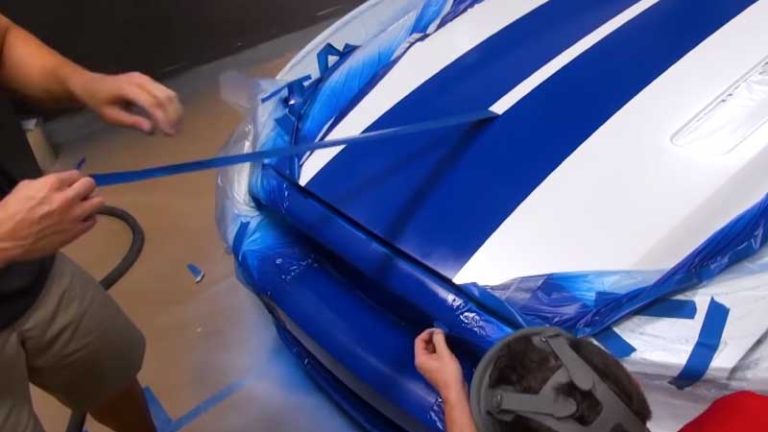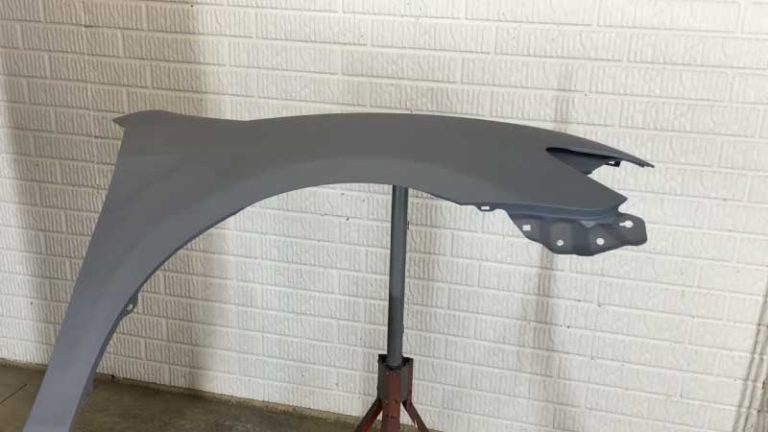How to Remove Paint Transfer from Car?
Despite automotive manufacturers’ claims to prioritize safety, they still need to source more vehicle-protecting shields. It is an obvious answer that has only been applied to Shield’s heli-carriers. As a result, regular cars are still vulnerable to dents, dings, scratches, and paint transfer.
Paint transfer is a common occurrence when one Car’s paint is transferred to another vehicle during contact. In these cases, a DIYer can often erase the paint transfer. However, a crash requires a new part or professional bodywork. The professional automobile team has plenty of experience dealing with paint transfer. So, you should find someone happy to share their knowledge with you.
What Is Car Paint Transfer?
Car paint transfer is transferring a layer of paint from one vehicle to another. A professional automotive repair shop usually does it. This job involves sanding down the existing paint, applying a primer coat, and then applying a second layer of paint. A clear coat is sometimes applied to protect the paint from the elements.
Whether or not you need to repaint after the car paint transfer depends on the condition of the existing paint on the vehicle and the quality of the new paint applied. A repaint is often unnecessary, and the paint transfer can be done successfully. However, a repaint may be recommended if the existing paint is severely damaged or the new paint is of significantly lower quality.
What Are The Fundamentals of Car Paint Transfer?

Removing paint transfer from your Car is important in maintaining its appearance. The basics of removing paint transfer from your Car include:
Identifying the source of the paint transfer
This could be from a neighboring car, a fence, a tree, or an object. The source identification will determine how much the paint transfer harms your Car. Yeah, examining the paint damage is very necessary.
Bring Mild Soap and Water Solution
You must need this solution to clean the dirt and extra liquid paint. Don’t make any harsh soap solution. A harsh solution is harmful to car paint.
Keep a razor blade or a clay bar.
You can keep any of these tools. This will be necessary when you will notice unnecessary paint stubbornness.
Buy A Quality Paint Remover
You should not go with low-quality paint removers. There are many paint thinners or removers available from good brands. We have seen most recommend Goo Gone. You should check “Is Go Gone safe on car paint?”. You must keep any of these based on your budget. And only dare to use rubbing alcohol to remove paint transfer with an expert suggestion.
Get A Wax
This is a basic item that is not just to use, but everyone uses it. Wax can give your car a good finish. So, if you want to make it more attractive, you will need this. Otherwise, you can skip it from your pain transfer item list.
Why Friction Is the Primary Reason for Paint Transfer?

When two vehicles come into contact, the paint begins to rub off one vehicle onto another. This causes high levels of friction between the vehicles’ surfaces. This friction causes the paint to be pushed off and transferred onto the other vehicle. The small-few -millimeters scuff marks can be seen on the vehicle’s body or windshield.
To prevent paint transfer scuffs, keeping a safe distance between two vehicles when parking or driving is important. We recommend checking for any signs of paint transfer on your vehicle regularly, as this can help you identify and repair any damage that may have occurred.
Basically, paint transfer means car paint damage, and different types of paint damage may occur. As many think, “Will fake blood ruin car paint?” You can check some of these reasons behind car paint damage so that you can keep your car safe.
How To Remove Paint transfer from Car?

There are different types of processes to remove paint transfer from your Car. The removal processes are similar, but the product we use to remove paint transfer may vary. So, consider this section as a primary procedure to remove paint transfer. After that, we will tell you some popular methods to remove paint transfer.
- Start by removing the affected area with rubbing alcohol to remove dirt or debris.
- Then, mix a mild detergent with warm water and gently scrub the area using a microfiber cloth.
- Rinse the area with clean water and dry with a clean microfiber towel.
- If the paint transfer does not come off, you may need to use fine-grade sandpaper to remove the remaining paint.
- When finished, apply a protective wax or sealant to the area to help prevent future paint transfer.
If you want to repaint a small portion, then you don’t need to think big. However, many customers want to change the whole paint structure. If you are like them, you must know the amount of paint you require. Do you know how many cans of spray paint to repaint a car?
How Toothpaste Removes Paint Transfer?
Yes, toothpaste can be used to remove paint transfer from a car. Toothpaste has abrasive qualities, allowing it to remove car paint from a surface. Its abrasive qualities make it useful for scrubbing away surface contaminants, especially the pigments from car paint. Additionally, some toothpaste brands contain chemical ingredients that help loosen the adhesive between the paint and the surface.
To use toothpaste to remove the paint transfer, clean the area with a damp cloth. Then, apply a small amount of toothpaste to a clean cloth and rub it onto the paint transfer. After a few minutes, rinse the area with clean water and dry it off. You should see the paint transfer come off.
Can WD-40 Remove Paint Transfer from Car?

Yes, you can use WD-40 to remove the paint transfer. Most experts recommend this for removing paint transfer means it is safe for your car paint. WD-40 is a great paint transfer remover because of its effective and safe formula. It is designed to help break down paint particles and quickly remove them from any surface without damaging it. WD-40 is also resistant to water. So, it becomes a perfect item for cleaning up paint spills without fear of it running and causing havoc.
Furthermore, it is non-toxic and non-flammable. That means it does not pose any risk to your skin, eyes, and lungs and is safe to use around children and pets. You can use it to unstick paint that has adhered to another surface, including plastic, glass, and metal.
Spray the affected area with WD-40 and then use a clean cloth to clean the area. Sometimes, you may need to let the WD-40 soak in before wiping the paint away.
Read more Find the Best Tire Paint Pen
Final Verdict
Our vehicles are vulnerable to dents, dings, and scratches. Shield’s heli-carriers set a great example, showing that new and innovative ways of protecting vehicles are possible. But it is our bad luck because you don’t get this innovation in every Car. Therefore, to ensure vehicle users’ safety and avoid any unnecessary costs due to paint transfer. So, we urge regular car owners to pay attention to any signs of paint transfer on their cars, as this can help prevent further damage or costly repainting.
Even if something bad happens, this guideline on “how to remove paint transfer for car” help you to retouch the paint. And always consider experts’ help if you need to learn more about repainting.







